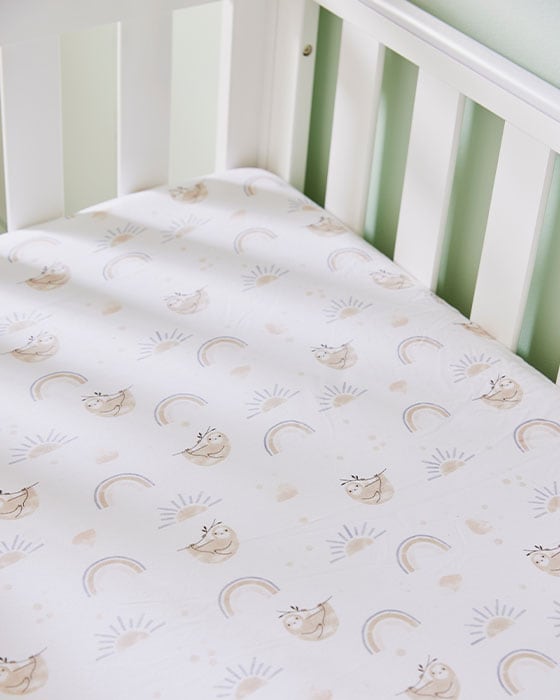
The mattress must fit the cot firmly. Any gaps at the ends and sides should be less than 20mm with the mattress centred in the cot. This ensures there is no risk that your baby could get trapped along the side of the cot during the night.
A cot mattress should be firm and flat with a thickness between 100 to 150mm. A mattress that is too soft may cause suffocation or Sudden Unexpected Death of an Infant (SUDI) risk. You can test by pressing in the centre and the edges of the mattress. You should feel some resistance and the surface should spring back immediately.
A mattress protector is essential to safeguard the mattress from all manner of baby spills, nappy leakage, toilet training accidents and perspiration. It will help ensure the mattress will last longer, which is especially important if you're planning on using the mattress for a second child. Look for a fitted mattress protector that is waterproof, yet breathable and is machine washable. Many feature allergy and dust mite protection, particularly important for asthma and eczema prevention.
Foam cot mattresses are durable and long-lasting. They are usually less expensive than innerspring mattresses, and are just as safe, as long as they are not too soft. Foam mattresses are lighter than innerspring mattresses, making it easier for cleaning and changing sheets. However they tend to lose shape within a few years, which may be a consideration if you're planning on using it for a second or subsequent child.
Innersprung mattresses are generally firmer and heavier than foam mattresses and will last longer. The interior features coils and layers of padding, which support the baby and enables the mattress to keep its shape. The more coils the mattress has, the better the support and the space between them allows air to flow more freely, keeping your baby cool in hot weather. Some mattresses have breathable vents on the sides to reduce heat and moisture retention, the more vents the better.
